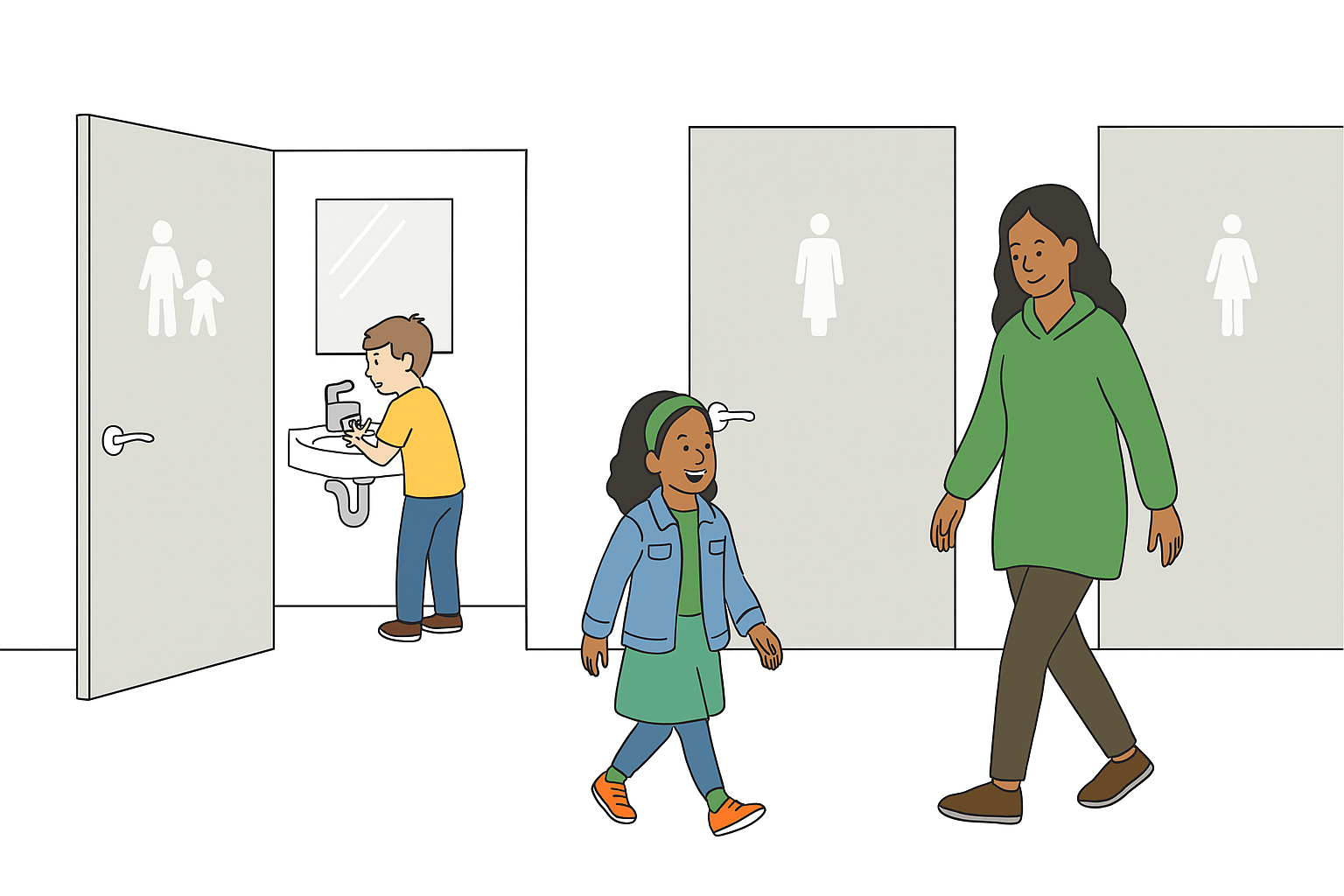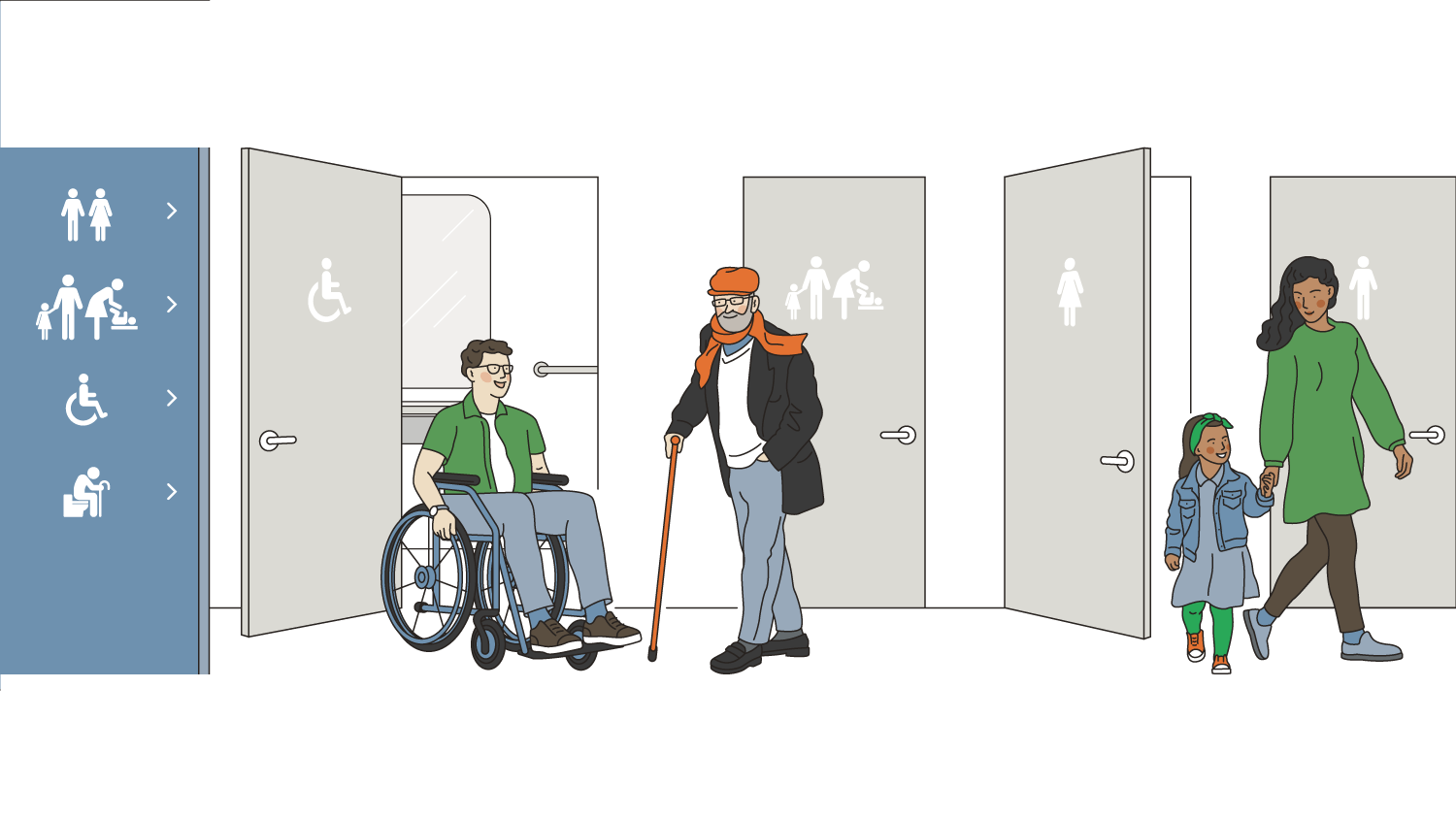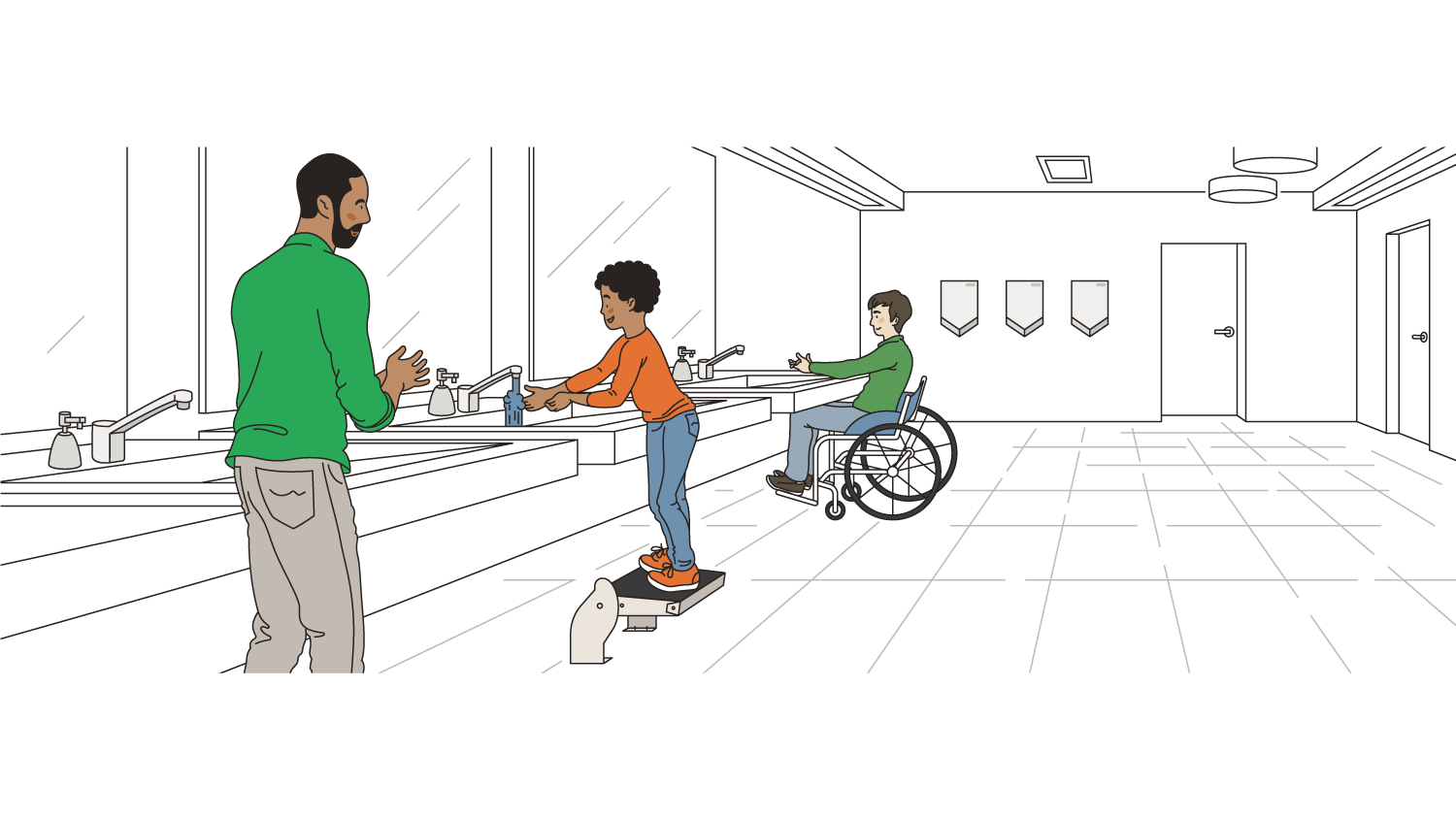Public restrooms are often the most overlooked part of a child’s day. While we carefully plan child-friendly classrooms, family dining spaces, and welcoming entryways, bathrooms are frequently designed for adults—without considering the small people who use them.
But there’s a growing movement to change that. Being “kinder-ready” isn’t just about preparing kids for school. It’s about ensuring every aspect of the built environment, including the restroom, supports their safety, independence, and dignity.
In this article, we’ll break down what a kinder-ready restroom really means, why it matters, and the small but powerful design steps that help children thrive in shared public spaces.
Why Bathroom Design Often Gets Overlooked
Despite being essential to the daily routine, most restrooms are built with only adult users in mind. For preschoolers and kindergartners, that can mean:
- Struggling to reach the sink or soap dispenser
- Having to ask a caregiver or teacher for help with basic hygiene
- Skipping handwashing altogether out of frustration
It’s not just inconvenient—it’s a missed opportunity. Public restrooms can either reinforce dependence or empower young children to take the next step toward confidence and independence.
The Big Picture: Why This One Step Matters
At its core, a kinder-ready restroom supports more than hand hygiene—it helps build self-esteem.
A child who can wash their hands on their own feels a sense of agency. A parent who doesn’t have to lift a 45-pound child up to the sink avoids strain (and mess). A teacher with 15 students in tow gains precious efficiency.
The problem? Most commercial sinks are mounted 34" or higher. Meanwhile, the average 4–6-year-old stands around 40" tall—barely above the counter. That means a 5-year-old’s eyes may not even clear the mirror, let alone reach the faucet.
This isn’t a minor inconvenience. It’s a design gap.
The Kinder-Ready Restroom Checklist
If you’re designing or upgrading a space to serve young children, here’s a simple framework to ensure your restrooms are up to the task:
Visbility
- Can children see themselves in the mirror?
- Are soap dispensers and signage placed at a child-accessible height?
Reachability
- Is the sink reachable without adult assistance?
- Is a secure, fixed step stool in place?
Safety
- Is the step stool self-retracting to avoid obstruction?
- Is it tamper-proof and theft-resistant?
- Does it maintain ADA accessibility?
Common Pitfalls to Avoid
Even well-intentioned restroom upgrades can fall short. Here are three frequent mistakes—and how to fix them:
- Using Portable Stools: These can be dangerous, unstable, and frequently go missing. A fixed, retractable step ensures safety and longevity.
- Blocking ADA Access: Step solutions should retract automatically when not in use, and they shouldn't be installed in restrooms that don't have a separate wheelchair accessible sink.
- Underestimating Customer Value: Parents notice when a restroom is designed with their child in mind. Small details like this often translate into positive word-of-mouth and repeat visits.
Let’s Build Kinder Spaces, One Step at a Time
Restrooms are often a child’s first experience with independence in a public setting. Let’s make that experience a good one.
If you’re renovating, building new, or simply looking for an upgrade that serves your youngest guests better, a kinder-ready restroom is a great place to start.




